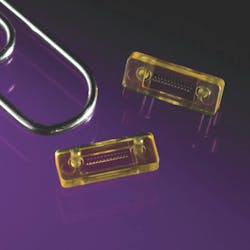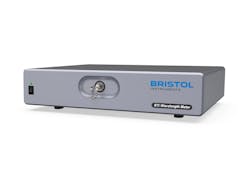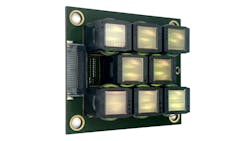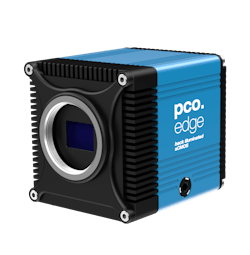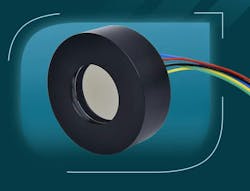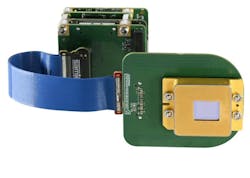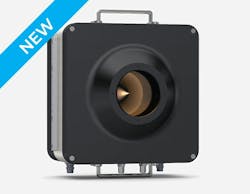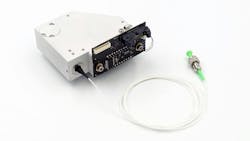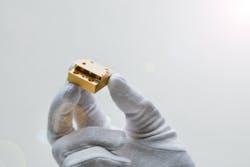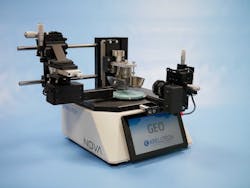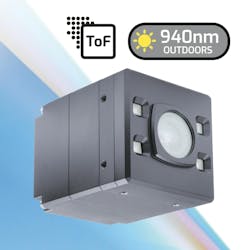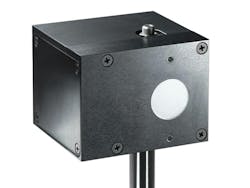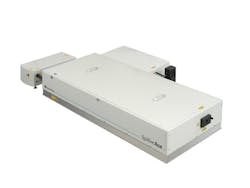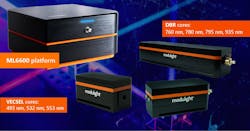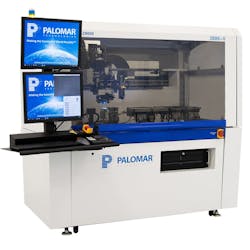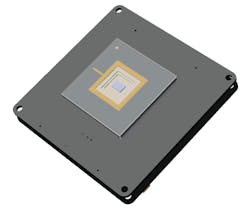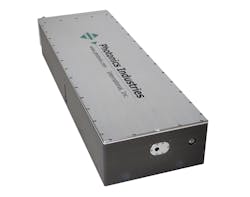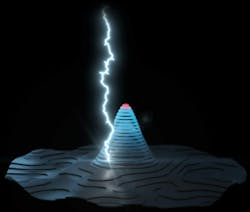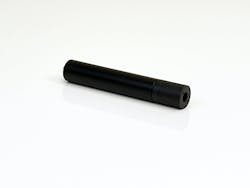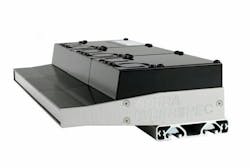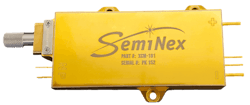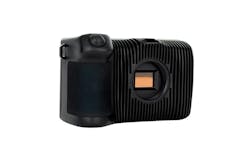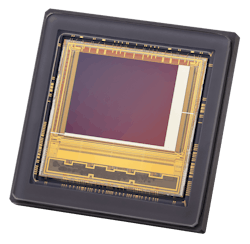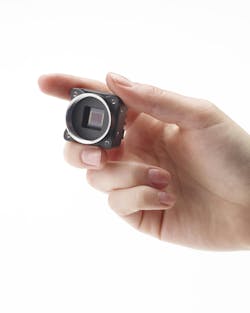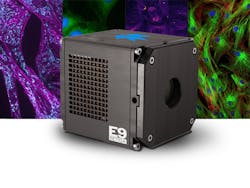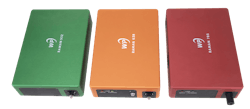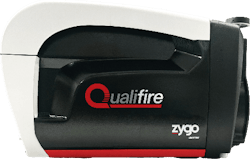Every year, Laser Focus World provides a sneak peek into what will be shown during the SPIE Photonics West exhibition, a part of the SPIE Photonics West event held annually at the Moscone Center in San Francisco, CA.
SPIE Photonics West 2024 will kick off January 27-28th with the Biomedical Optics Symposium (BiOS) and the BiOS Expo, followed by the inaugural SPIE Global Business Forum on January 29th for executives, investors, entrepreneurs, and stakeholders across the global photonics industry. Then, from January 30th through February 1st, SPIE Photonics West's conference and exhibition will open; we invite you to stop by booth 3658 to meet our Laser Focus World team members (see video).
This exhibitor product preview is just a snapshot of what you can expect to see on the exhibit floor, and will be continually updated as company participation announcements come to us. If you would like to be included, please reach out to managing editor Lee Dubay at [email protected].
Micro-molded plastic components
Precision micro-molded plastic component capabilities with part geometries from 5 cm to less than 1 mm are available, including insert molding, cleanroom molding, and two-shot molding across materials including PEEK, Ultem, LCP, and engineered thermoplastics. The company can produce micro-optics such as 250 μm fiber-optic lenses, parallel arrays, demux devices, and diffractive lenses, and can mold attenuated resins and apply infrared, antireflection, and reflective coatings onto plastic substrates.
Accumold; Booth number: 1566
Single- and multi-axis servo drives
The Automation1 XA4 and iXA4 PWM servo drives include a full motion controller and I/O expansion options. Both models are part of the company's Automation1 motion control platform, which includes development software, controls, motor drives, and the Fiber-Optic HyperWire communication bus. Future options will include a four-axis version, I/O expansion, and DC motor supply.
Aerotech; Booth number: 957
CMOS image sensor
The Mira016 global-shutter CMOS image sensor, with 0.16 Mpixels, has uses in 2D and 3D consumer and industrial machine vision applications. Features include a 2.79 µm pixel size with high sensitivity made possible by backside-illuminated (BSI) technology, and a MIPI CSI-2 interface that works with several processors and field-programmable gate arrays (FPGAs). It measures 1.8 × 1.8 mm in size, with configurability and high sensitivity in visible and near-infrared wavelengths.
ams OSRAM; Booth number: 5607
High-resolution laser wavelength meter
The new 872 Series high-resolution laser wavelength meter has use in frequency stabilization of lasers. Supporting laser wavelength measurements from 375 to 1700 nm, the wavelength meter offers a frequency resolution better than 300 kHz at 300,000 GHz, which results in exceptional sensitivity to wavelength deviations. With a built-in PID controller and 1 kHz sustained measurement rate, the system is well suited to precisely stabilize lasers used for applications such as atomic cooling and trapping.
Bristol Instruments; Booth number: 231
Illumination module for LiDAR
An illumination module platform for short- and mid-range light detection and ranging (LiDAR) has use in automotive safety and robotic vision in industrial applications. Using eight 940 nm vertical-cavity surface-emitting laser (VCSEL) modules, the module offers several selectively addressable horizontal slices of the field of illumination (FOI), and is a lower-cost alternative than using large addressable VCSEL arrays. A voltage supply of only 21 V is required.
Coherent; Booth number: 4805
sCMOS camera
The pco.edge 10 bi CLHS scientfic CMOS (sCMOS) camera delivers good imaging performance suitable for microscopy, life science, and physical science applications. With a back-illuminated image sensor, the camera comes with a quantum efficiency of up to 85% with broad spectrum out to the near-infrared. The sensor incorporates microlenses and a full-pixel height deep trench isolation for suppressing crosstalk and achieving good modulation transfer function for highest image quality.
Excelitas Technologies; Booth numbers: 8330 (BiOS) and 649 (Photonics West)
Image intensifier
Photonis' 25 mm image intensifier is based on high collection efficiency microchannel-plate (Hi-CE MCP) technology, and available with advanced high quantum efficiency (Hi-QE) photocathodes. Available configurations include single MCP, dual MCP, and proximity focused diode models, all offering good signal-to-noise ratio, spatial resolution, and gating characteristics. The image intensifier has use in scientific and high-speed imaging.
Exosens; Booth number: 3273
SWIR camera core
The C-RED New Space shortwave-infrared (SWIR) camera core withstands the extreme conditions of space operations, and captures 600 fps at full frame with 30 e- readout noise. Features include 15 μm pixel pitch, a wavelegth range from 0.9 to 1.7 µm, 70% flat quantum efficiency (1.0 to 1.65 µm), electronic shutter <5 μs, and 93 dB linear dynamic range. Applications range from high-speed laser beam detection (free-space optical communications, beacon beam tracking) to Earth observation and greenhouse gas detection.
First Light Imaging; Booth number: 5029E
Laser power detector
The HP100A-50KW-GD laser power detector is designed mainly for high-power laser and laser system manufacturers, factories that cut thick metal parts with high-power lasers, and military applications. With its gold reflector cone and back-reflection reducing geometry, the detector traps >97% of the incident light and can handle up to 50 kW of continuous laser power. Its gold cone design also allows for very high damage thresholds of 25 kW/cm2. The very low back-reflections (<2.5%) of the detector ensure a safer working environment with high-power lasers, even at 50 kW.
Gentec-EO; Booth number: 858
Interrogation monitor
The I-MON 1024 wide-bandwidth interrogation monitor for monitoring of fiber Bragg gratings offers a full spectrum readout capacity of up to 40 kHz, providing more valuable information and data samples. A version with the company's DISB-485 electronics specifically designed for the 1024-pixel sensor is available. The interrogation monitor comes with a comprehensive developer's kit to ease the setup process.
Ibsen Photonics; Booth numbers: 8531 (BiOS) and 3531 (Photonics West)
Near- and far-field cameras
The VTC 4000 near-field camera is designed for electro-optical characterization of all emitters of a VCSEL array; it allows the absolute measurement of power and polarization properties of each individual emitter in a one-shot process. The VTC 2400 far-field camera enables production-capable testing of laser-based components such as LiDAR systems.
Instrument Systems; Booth number: 4205-12
Single-bar diode laser package
The LS single-bar diode laser package has use in optical pumping of next-generation solid-state-lasers; its double-side cooled open heatsink design enables improved conductive cooling. Continuous-wave output power levels exceed 150 W at 9xx nm, enabling advanced pump- or direct-diode laser (DDL) applications.
Jenoptik; Booth number: 1341
Optical polishing system
The NOVA optical polishing system supports a variety of polishing applications from connectors to PICs/waveguides, and bare fibers to custom components. The system is scalable from R&D projects to high-volume production and features wireless tablet operation with an Android interface.
KrellTech; Booth number: 2757
Precision lens solutions
Kyocera’s Optical Components Group designs and manufactures precision lens solutions for demanding imaging applications. Available lenses include molded aspherical lenses, spherical lenses, plastic lenses, automotive lenses, machine-vision lenses, scanner lenses, line-sensor lenses, F-Theta lenses, and UV, EUV, and DUV objectives.
Kyocera; Booth number: 5529
Optical design software
TracePro 2023.5 optical design software, available in Standard and Expert editions, allows for effective modeling of diffractive optical elements (DOEs). This modeling feature includes three new surface property types: holographic optical element (HOE), computer-generated hologram (CGH), and Zernike phase. Its Stray Light Analyzer in both editions simplifies analyzing stray or unwanted light in optical systems. By automating numerous steps and offering a more intuitive user interface, the Stray Light Analyzer streamlines the process, saving time and increasing efficiency.
Lambda Research Corp.; Booth number: 2244
Time-of-flight camera
The Helios2 Ray outdoor time-of-flight (ToF) camera is powered by Sony’s DepthSense IMX556PLR ToF image sensor and engineered for challenging outdoor lighting environments. Equipped with 940 nm VCSEL laser diodes, the camera generates real-time 3D point clouds, even in direct sunlight. Additional features include a 640 × 480 depth resolution at distances of up to 8.3 m and a frame rate of 30 fps.
Lucid Vision Labs; Booth number: 137
Ultrashort-pulse laser
The LXR ultrashort-pulse (USP) laser platform offers 24/7 operation readiness and highly modular architecture for laser processing applications. It features pulse energy up to 150 µJ, power from 20 to 180 W, beam quality of M2 < 1.2, selectable pulse width from 800 fs to 12 ps, and 1030, 515, and 343 nm wavelengths. The platform provides advanced digital control over laser pulse output, with simple switching between standard, burst, and fast-burst modes possible.
Luxinar; Booth number: 5301
Integrating sphere
The Newport 819-SL-1.5-800PS integrating sphere provides multiple measurement capabilities, including a precision photodiode for calibrated average power measurement, a fast photodiode for pulse shape characterization on an oscilloscope and a built in SMA fiber adapter, and an SMA fiber-optic adapter for easy connection to a spectrometer. It has a small internal diameter of 1.5 in (38 mm) to minimize the pulse stretching effect inherent to integrating spheres, giving it a time constant of 0.7 ns. Together with its fast silicon photodiode, it provides a pulse rise time of 0.8 ns and a fall time of 2.8 ns.
MKS Newport; Booth number: 927
Propagation analyzer
The Ophir BeamSquared SP204S M2 propagation analyzer measures the propagation characteristics of 266–1100 nm continuous-wave and pulsed laser systems with increased sensitivity and resolution in the near-infrared region. It offers a long optical train and the company's Ultracal calibration capability, and is ISO 11146-compliant. Applications include industry, science, and research and development.
MKS Ophir; Booth number: 927
Regenerative ultrafast amplifier
The Spectra-Physics Spitfire Ace CEP6 regenerative ultrafast amplifier offers a carrier-envelope phase (CEP) stabilization capability that delivers low CEP. The ultrafast amplifier delivers >5 mJ, <25 fs pulses with CEP stability of <100 mrad (10-shot average) and <300 mrad single-shot over many hours of continuous operation. It has uses in attosecond (10-18 s) science and high-harmonic generation applications.
MKS Spectra-Physics; Booth number: 927
Laser module
The ML6600 laser module enables integrating new distributed Bragg reflector (DBR) and vertical-external-cavity surface-emitting laser (VECSEL) cores, enabling use in quantum computing. The DBR laser cores feature the company’s DBR single-frequency laser diodes in 760, 780, 795, and 935 nm, while the company’s VECSEL technology integration paves the way for barium trapped ion applications at 493, 532, and 553 nm wavelengths featuring <100 kHz linewidth, watt-level output, and good beam quality, all of which are critical factors in quantum applications.
Modulight; Booth number: 1267
Die bonder
The 3880-II die bonder includes options to further maximize productivity and reduce programming time by up to 95%. It performs silver sintering, eutectic, epoxy, UV, solder paste, and thermocompression die bonding in applications including CMOS sensors, high-power laser diodes, LiDAR, and quantum computing.
Palomar Technologies; Booth number: 5242
Hardware module-enhanced SPAD camera
The PF32 single-photon avalanche diode (SPAD) 2D camera series now includes a compact module version suitable for building into low size, weight, and power (SWaP) production systems. The module allows full control over the optical path and easy mechanical integration. It incorporates the Xilinx Artix 7 field-programmable gate array (FPGA) as well as a 4-lane PCIe connection to the host system via the industry-standard OCuLink connector.
Photon Force; Booth numbers: 8206 (BiOS) and 3216 (Photonics West)
Nd:YAG nanosecond lasers
The DXG Series Nd:YAG nanosecond lasers deliver up to 20 W power in the UV at ~20 ns, and up to 30 W in green at ~35 ns. They also deliver up to 2 mJ pulse energy, single shot up to 50 kHz pulse repetition rate, and typical TEM00 M2 < 1.2 beam quality. A long pulse option is also available.
Photonics Industries International; Booth number: 5005
Photonics alignment algorithm
The PILightning algorithm for photonics alignment offers integrated AI-based real-time executive function. The algorithm eliminates the need for time-consuming searches or manual intervention, and drives down costs for test and assembly in all industrial photonics alignment applications, from wafer probing to final packaging. It is available on the company’s ultra-clean air bearing-based F-142 and F-143 multi-axis photonics alignment systems, as well as ACS-based piezo stage and steering-mirror controllers. Further modular expansion and potential upgrades to existing FMPA systems are being developed.
PI (Physik Instrumente); Booth numbers: 3517, 3520
High-temperature resistant laser modules
The High-temperature Resistant Module (HRM) lasers operate in extreme temperatures and eliminate the need for thermoelectric coolers and heat sinks. With multiple wavelength choices available across the UV, visible, and infrared spectrum, the modules feature two performance levels—one offering functionality in temperatures of up to 85°C and another with operation in up to 175°C for more extreme conditions. They are available in output powers from 2 to 100 mW, are IP67-rated for water and dust resistance, and feature a sealed Mini USB connector.
Power Technology; Booth number: 1643
Hyperspectral LED line light
The COBRA HyperSpec hyperspectral LED line light focuses exclusively on the visible band between 400 and 700 nm. Demonstrating a broad, flat, and fuller spectrum, the light provides an ideal solution for a wide range of color inspection applications such as color integrity and surface finish inspections, and demonstrates good color rendering.
ProPhotonix; Booth number: 4040
Laser and photonics coolers
The curamik CoolPower and CoolPower Plus laser and photonics cooling solutions are fabricated with multiple layers of pure copper for effective thermal dissipation in the smallest volumes possible. The coolers benefit from the company's curamik direct copper bonding process to achieve hermetic multilayer structures without solder or additional adhesive layers. The copper coolers are precisely machined and milled to meet the flatness requirements for mounting to laser diodes to avoid potential “hotspots” in laser diode circuits.
Rogers Corporation; Booth number: 4208
High-power laser module
The XCM high-power multi-chip module offers 50 W optical output power at 1470 nm, with peak power of 72.8 W and the ability to achieve 55 W at 12 A. It also offers electrical power capacity of 220 W for use in precision control, and operates at a drive current of 10 A and a drive voltage of 22 V. Other key features include high heat load resilience, a detachable fiber core, and optional features like a photodiode and thermistor to further enhance performance and functionality. Applications include medical, aerospace, defense, and industrial.
SemiNex Corporation; Booth number: 4528
UV-C LEDs
The SF1 235 nm and SN3 255 nm UV-C LEDs have use in sterilization, water and gas sensing, and instrumentation. Both models are available in flat or dome (parabolic) lens SMD format, or in transistor outline (TO-can) ball lens packages. The SMD packages are a small-footprint component with two lens options that provide wide or narrow UV coverage angles, while the TO-can format consists of a hermetically sealed package to protect sensitive components, with a ball lens that creates a narrow UV beam angle for high irradiance. Custom packaging options are also available.
Silanna UV; Booth number: 237 (co-located with Marktech Optoelectronics)
Portable wideband laser
The SLP-1000 portable wideband laser, with uses in industrial, agricultural, and biomedical imaging applications, leverages a photonic integrated circuit (PIC) solution based on a patterned alternating dispersion mechanism. The laser provides maintenance-free operation with a fast start-up time and since no (re-)calibration is required, downtime is minimized. It also serves as an alternative for halogen light sources, offering at least 5x longer lifetime.
SuperLight Photonics; Booth number: 5211
SWIR camera
The Acuros GO 6 Mpixel shortwave-infrared (SWIR) camera, which features the company's high-resolution colloidal quantum dot (CQD) SWIR sensor technology and a mirrorless design, has uses in defense, law enforcement, first responder applications, agricultural imaging, industrial vision, scientific, and consumer photography. Features include 3064 × 2040 pixel resolution using the 7 µm pitch Acuros CQD sensor, broadband spectral sensitivity from 400 to 1700 nm, a global snapshot shutter design with video frame rates of 30 fps, and digital shutter speeds up to 1/100,000 (10 µs) to capture high-speed events without motion blur.
SWIR Vision Systems; Booth number: 4348
CMOS image sensor
The OnyxMax low-light CMOS image sensor is designed for extremely low-light conditions, down to 1 mLux, making it ideal for applications including science, defense, traffic cameras, broadcast, surveillance, border control, and astronomy. It features 1.3 Mpixels and is available in monochrome (standard), with CFA arrangements available on request. It has a 10 × 10 µm pixel, designed with the company's HiRho technology, which enables good near-infrared (NIR) sensitivity and spatial resolution with quantum efficiency (QE) of 58% and MTF of 63% at 850 nm. Its on-chip HDR mode can handle scene dynamics up to 100 dB.
Teledyne e2v; Booth number: 327
USB3 machine vision camera
The Dragonfly S USB3 machine vision camera features a modular design to accelerate the inception stage of imaging application development for a diverse range of industrial and nonindustrial segments. It has uses in embedded or handheld device applications such as biometrics kiosk solutions, ophthalmoscopy, 3D scanning, and automated optical inspection. Multiple configurations are available, from board-level to a fully enclosed module in a ruggedized aluminum case. The USB connector is offered in a rear or side orientation with screw-in locking mechanism.
Teledyne FLIR IIS; Booth number: 327
CMOS camera
The Retiga E9 camera captures exposures from tens of microseconds to tens of minutes, delivering detailed, high-resolution images without extraneous noise. With its stacked CMOS sensor technology developed by Sony, the camera’s square pixel array with 3.76 µm pixels and high dynamic range (>80 dB) combine to create a sensitive, versatile, and cost-effective low-noise camera ready for integration or benchtop use.
Teledyne Photometrics; Booth number: 327
Raman spectrometers
The X series includes Raman spectrometers and systems for use at 532, 638, 785, 830, and 1064 nm excitation, covering the fingerprint and functional range of Raman peaks with 10 cm-1 resolution or better. They feature the company’s high-efficiency volume-phase-holographic (VPH) gratings and a reproducible optical bench, as well as a choice of f/1.3 or f/1.8 input aperture, detector cooling level, slit size, and sample coupling.
Wasatch Photonics; Booth number: 3341
Laser interferometer
The Qualifire laser interferometer supports demanding metrology applications in the semiconductor, lithography, spaceborne imaging systems, consumer electronics, and defense industries. Its Smart Accessory Interface recognizes any “smart accessory” installed and automatically applies a system error file and performs lateral calibration. The interferometer's integrated Phase Measuring Receptacle (PMR) modulates interference fringes between the test part and reference optic, which ultimately creates a quantitative surface map. An optional Flying Spot module is available for artifact reduction and includes an autofocus feature.
Zygo Corporation; Booth number: 1048

